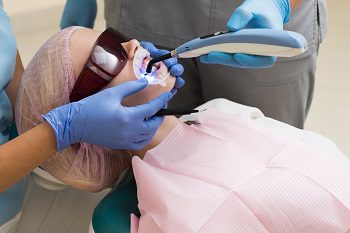They are referred to as “indirect” restorations because they are created outside of the mouth, in a facility separate from the dentist’s office. Because of the size of the cavity, a simple filling will not always suffice.
The Difference Between Inlays and Onlays:
Inlays and onlays are created specifically for each patient’s dental structure. An inlay sits on the chewing surface between the two dental cusps, whereas an onlay includes at least one cusp.
They are frequently built with tooth-coloured dental materials to blend in with your smile. According to your desired tastes, dental needs, and budget, they can be made from composite resin or porcelain.
Inlays and onlays can increase the strength of a tooth by up to 75%.
Benefits of Inlays and Onlays:
There are various advantages to using inlays and onlays, including the following:
- In terms of fracturing and degradation, it outperforms traditional filler materials.
- Stain-resistant
- Improve the natural beauty and lustre of your teeth.
- A patient’s teeth, colour, and shape are all considered while designing a custom-made appliance.
- Depending on the patient’s cavity and fracture risk, they can last up to 30 years.
Factors Influencing The Longevity of Inlays and Onlays:
If dental restorations are appropriately cared for, they can endure an extended period. The following factors may determine the longevity of an inlay or onlay.
- The position of the affected tooth
- The material used
- The nerves of the tooth’s health
- The patient’s oral hygiene practises
- How much a person’s teeth are subjected to daily
- Long-Term Preservation of Your Restorations
Guidelines

- Even though your inlay/onlay will need to be replaced eventually, there are ways to extend the life of your repair. Your dentist may advise you to follow the following:
- Brush your teeth at least twice per day, preferably three times. Brush and floss your teeth at least twice a day, preferably 30 minutes after each meal, to prevent harmful germs from growing.
- Floss your teeth once a day to remove plaque and tartar. Plaque, tartar, and bacteria can accumulate between teeth if not adequately cleaned.
- Fluoride toothpaste is advised. Fluoride benefits include remineralizing enamel and preventing teeth from further deterioration. Furthermore, we recommend using an abrasive-free mixture that will not harm your repairs.
- Get rid of unfavourable habits. Keep sharp things, such as pencils and pen caps, out of your mouth, and avoid swallowing ice. It’s better to avoid picking at your nails. These unhealthy practices could affect your natural teeth and your inlays and onlays.
- Foods that are hard or sticky should be avoided. Taffy and caramels may dislodge your restorations, while hard foods like nuts or popcorn may fracture or break them.
It is critical to visit the dentist regularly. During routine inspections and cleanings, your dental team can examine the status of your restorations. In this way, any potential issues can be addressed and treated by your doctor before they worsen.
Talk with your Petaluma dentist, Dr. Amir Hosseini, at Petaluma Braces and Family Dentistry, today for more information.
Resources:
*Neither this nor any other content in this media is meant to prescribe, recommend, or prevent any treatment or procedure. We highly recommend that you get the advice of a qualified dentist or other medical practitioners regarding your specific dental condition




